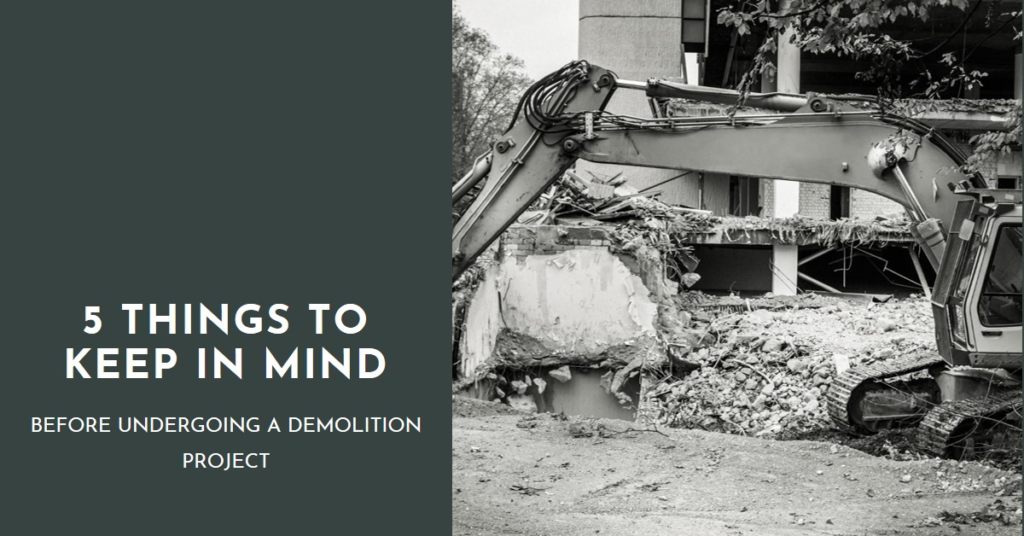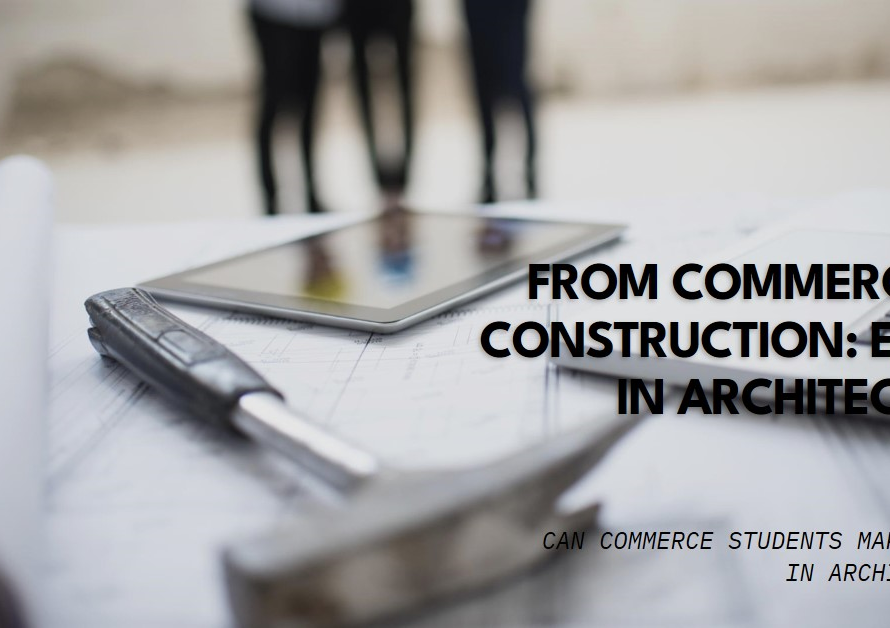
Table of Contents
Embarking on a demolition project requires meticulous planning, preparation, and adherence to safety and regulatory standards. Whether you’re demolishing a small structure or a large building, several crucial factors must be considered to ensure a successful and safe demolition process. In this guide, we’ll explore five key things to keep in mind before undergoing a demolition project, offering valuable insights and tips for project managers, contractors, and property owners.
1. Conducting Comprehensive Site Assessments
Before initiating any demolition activities, conducting a thorough site assessment is paramount. Evaluate the existing structure’s condition, materials used in construction, structural integrity, environmental factors, and any potential hazards such as asbestos, lead paint, or hazardous materials. Engage qualified professionals such as structural engineers, environmental consultants, and demolition experts to assess site conditions comprehensively.
Identify utility connections, underground infrastructure, and nearby buildings or structures that may be affected by the demolition process. Obtain necessary permits, approvals, and permissions from local authorities, environmental agencies, and utility providers before commencing demolition work. A comprehensive site assessment forms the foundation for developing a safe, efficient, and compliant demolition plan tailored to site-specific conditions and requirements.
2. Developing a Detailed Demolition Plan
Based on the site assessment findings, develop a detailed demolition plan outlining demolition methods, sequencing, safety protocols, waste management strategies, and environmental protection measures. Collaborate with demolition experts, engineers, and safety professionals to create a step-by-step plan that addresses site-specific challenges, risks, and regulatory compliance requirements.
Consider factors such as demolition equipment and machinery needed, demolition techniques (such as mechanical, implosion, or deconstruction), debris removal and disposal procedures, dust and noise control measures, and site security protocols. Incorporate contingency plans for unforeseen circumstances, emergencies, and community outreach to mitigate disruptions and ensure public safety throughout the demolition project.
3. Ensuring Compliance with Regulations and Permits
Demolition projects are subject to a myriad of regulations, codes, and permits at local, state, and federal levels. Ensure strict compliance with demolition regulations, building codes, zoning ordinances, environmental regulations (such as air quality and hazardous materials), and safety standards (such as OSHA regulations). Obtain necessary demolition permits, environmental clearances, and waste disposal permits well in advance of project commencement.
Engage with regulatory agencies, environmental authorities, and building departments to understand and fulfill all legal requirements and documentation for the demolition project. Conduct regular inspections, audits, and monitoring throughout the demolition process to ensure ongoing compliance and adherence to approved plans and specifications. Non-compliance can result in costly fines, project delays, and potential legal liabilities, emphasizing the importance of regulatory diligence in demolition projects.
4. Implementing Safety Protocols and Training
Safety is paramount in demolition projects due to the inherent risks associated with structural instability, heavy machinery, hazardous materials, and environmental hazards. Prioritize safety protocols, training programs, and safety equipment for all personnel involved in the demolition project, including demolition crews, operators, supervisors, and support staff.
Conduct comprehensive safety orientations, hazard assessments, and job-specific training for tasks such as equipment operation, fall protection, confined space entry, respiratory protection, and emergency response procedures. Provide personal protective equipment (PPE) such as helmets, gloves, goggles, respirators, and high-visibility clothing as per safety guidelines and regulatory requirements.
5. Managing Environmental Impacts and Waste Disposal
Demolition activities can have significant environmental impacts, including air and noise pollution, dust emissions, soil erosion, and waste generation. Develop an environmental management plan that addresses pollution prevention, waste minimization, recycling, and proper disposal of demolition debris, hazardous materials, and contaminated soil.
Implement dust suppression measures such as water spraying, dust barriers, and enclosure systems to mitigate airborne dust particles during demolition operations. Separate and sort demolition debris for recycling and reuse of materials such as concrete, metals, wood, and glass to minimize landfill disposal and promote sustainability. Dispose of hazardous materials in accordance with regulatory guidelines and utilize licensed waste disposal facilities for safe handling and disposal.
6. Securing Insurance and Liability Coverage
Demolition projects involve inherent risks and liabilities, making it essential to secure adequate insurance coverage and liability protection. Obtain comprehensive liability insurance, worker’s compensation insurance, and property damage coverage from reputable insurers specializing in construction and demolition risks.
Review insurance policies, coverage limits, exclusions, and deductibles carefully to understand the extent of protection provided and any additional endorsements or riders required for specific project risks. Ensure that all contractors, subcontractors, and stakeholders involved in the demolition project carry valid insurance coverage and comply with contractual insurance requirements to mitigate financial risks and potential legal disputes.
7. Communicating with Stakeholders and Communities
Effective communication and community outreach are key elements of successful demolition projects, particularly in urban or densely populated areas. Establish open channels of communication with project stakeholders, property owners, tenants, neighbors, local authorities, and community organizations to inform them about the demolition schedule, safety measures, potential disruptions, and mitigation efforts.
Conduct pre-demolition meetings, public hearings, and outreach events to address concerns, answer questions, and build positive relationships with stakeholders. Provide timely updates, notifications of work activities, and contact information for project inquiries or emergencies to ensure transparency, trust, and cooperation throughout the demolition process.
8. Monitoring and Mitigating Risks in Real Time
Proactive risk management and monitoring during demolition operations are crucial to identifying and mitigating potential hazards or issues in real time. Implement regular site inspections, safety audits, and environmental monitoring to assess compliance with safety protocols, equipment performance, environmental conditions, and workforce behaviors.
Utilize technology such as drones, sensors, and monitoring systems to track demolition progress, detect anomalies, and monitor air quality, noise levels, and vibration impacts on surrounding structures. Establish emergency response protocols, evacuation procedures, and communication protocols for addressing incidents, accidents, or unexpected events during demolition activities.
9. Conducting Post-Demolition Site Cleanup and Restoration
Once demolition activities are completed, prioritize thorough site cleanup, debris removal, and site restoration to comply with regulatory requirements and community expectations. Dispose of demolition debris, hazardous materials, and construction waste responsibly according to approved waste management plans and recycling guidelines.
Restore site conditions, landscaping, and environmental features affected by demolition activities, including erosion control measures, vegetation restoration, and surface grading to promote site stability and aesthetics. Conduct final inspections, documentation, and closeout procedures to confirm compliance with demolition plans, safety standards, environmental regulations, and permit requirements before project completion.
10. Evaluating Lessons Learned and Continuous Improvement


After completing a demolition project, take time to conduct a comprehensive project review, evaluate lessons learned, and identify areas for improvement in future projects. Gather feedback from project teams, stakeholders, contractors, and regulatory agencies regarding project performance, challenges faced, successes achieved, and areas of opportunity for enhancement.
Document best practices, success stories, and key takeaways from the demolition project to inform future project planning, risk management strategies, safety protocols, and environmental practices. Embrace a culture of continuous improvement, innovation, and knowledge sharing within your organization or project teams to elevate demolition project outcomes, safety standards, and environmental stewardship in the construction industry.
By keeping these essential considerations in mind before undergoing a demolition project, project managers, contractors, and stakeholders can navigate challenges, mitigate risks, and ensure successful outcomes aligned with regulatory compliance, safety excellence, environmental responsibility, and stakeholder satisfaction. Demolition projects, when executed with diligence, expertise, and proactive planning, contribute to safe, sustainable, and well-managed transformations in the built environment.


